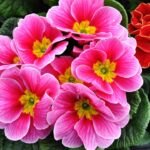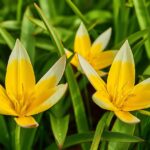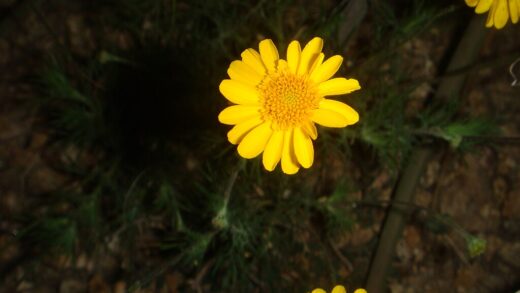The care of the dwarf russian almond

The Dwarf Russian Almond, a captivating and resilient shrub, offers a spectacular display of vibrant pink blossoms in early spring, often before its leaves emerge. To ensure this ornamental gem thrives and reaches its full potential, a comprehensive understanding of its care requirements is essential. This involves a holistic approach, considering everything from its initial placement in the garden to its ongoing nutritional needs and structural maintenance. Proper care not only guarantees a breathtaking floral show but also promotes a vigorous, healthy plant that is more resistant to environmental stresses, pests, and diseases throughout the year. Cultivating this plant is a rewarding experience, as its relatively low-maintenance nature is paired with a high-impact aesthetic appeal that can enhance any landscape design, from rock gardens to shrub borders.
Caring for the Dwarf Russian Almond begins with selecting an appropriate planting site, which is a critical determinant of its long-term health and vitality. This shrub flourishes in a location that receives full sun, meaning at least six to eight hours of direct sunlight each day. Ample sunlight is paramount for prolific flowering and robust growth, as insufficient light can lead to sparse blooms and a leggy, weakened structure. The chosen location should also offer protection from harsh, drying winds, which can damage the delicate blossoms and desiccate the foliage, particularly in more exposed or colder climates. Evaluating the garden layout to identify a spot that meets these light and protection criteria is the foundational step in successful cultivation.
Soil quality and composition are equally crucial for the well-being of the plant. The Dwarf Russian Almond exhibits a remarkable adaptability to a wide range of soil types but performs best in well-drained loamy or sandy soils. It is particularly intolerant of waterlogged conditions, as “wet feet” can quickly lead to root rot, a fungal disease that can be fatal. Therefore, ensuring excellent drainage is non-negotiable; if the native soil is heavy clay, amending it with organic matter like compost or sand can significantly improve its structure and drainage capacity. A soil pH that is neutral to slightly alkaline is ideal, and conducting a soil test can provide valuable insights to make necessary adjustments before planting.
Beyond the initial setup, a consistent maintenance routine throughout the growing season will keep the shrub in prime condition. This includes regular monitoring for any signs of stress, such as yellowing leaves or wilting, which could indicate issues with watering, nutrients, or disease. Weeding around the base of the shrub is also important to reduce competition for water and essential nutrients, which is especially critical for younger, establishing plants. Applying a layer of organic mulch around the base, without touching the stem, helps to conserve soil moisture, suppress weed growth, and regulate soil temperature, creating a more stable and favorable root environment.
Soil preparation and site selection
Proper soil preparation is a fundamental aspect of establishing a healthy Dwarf Russian Almond shrub that will flourish for years to come. Before planting, the designated area should be thoroughly cleared of all weeds and grass, which would otherwise compete for vital resources. The next step involves tilling or digging the soil to a depth of at least 12 to 15 inches, which helps to loosen compacted earth and improve aeration for developing roots. This is also the ideal time to incorporate amendments based on the soil’s existing composition; for instance, heavy clay soils benefit immensely from the addition of coarse sand and compost to enhance drainage and nutrient content.
More articles on this topic
The physical location, or site selection, plays a pivotal role in the plant’s ability to thrive. Beyond the primary requirement of full sun exposure, one should consider the shrub’s mature size, which typically reaches about 1.5 meters in height and spread. It is important to provide adequate space for it to grow without being crowded by other plants, which can restrict air circulation and increase the risk of fungal diseases. Planting it away from areas with significant foot traffic will also prevent soil compaction around the root zone. Thoughtful placement ensures the shrub not only receives its environmental necessities but also contributes effectively to the garden’s overall aesthetic.
Furthermore, analyzing the microclimate of the potential planting spot is a beneficial step. A south-facing location is often ideal as it maximizes sun exposure throughout the day. It is also wise to avoid planting in low-lying areas or depressions where cold air and water tend to collect, as this can lead to frost damage in early spring and increase the likelihood of root rot issues. Observing the site over a day to understand its sun and shade patterns can provide crucial information for making the best possible decision for the plant’s long-term success and vigor.
Ultimately, the goal of meticulous soil preparation and site selection is to create an environment that mimics the plant’s native habitat as closely as possible. The Dwarf Russian Almond is native to regions with open, sunny steppes and rocky slopes, indicating its preference for well-drained soils and abundant light. By replicating these conditions in the garden, one provides the shrub with the foundational elements it needs to establish a strong root system, grow vigorously, and produce the stunning floral display for which it is prized. This initial investment of time and effort pays significant dividends in the form of a healthy, low-maintenance, and beautiful ornamental shrub.
Pruning and maintenance practices
Pruning is a key maintenance practice that shapes the Dwarf Russian Almond, promotes its health, and enhances its flowering potential. The primary pruning should be conducted immediately after the blooming period has finished in late spring. This timing is crucial because the shrub flowers on old wood, meaning the flower buds for the following year will form on the growth produced during the current summer. Pruning too late in the season or in winter risks removing these buds, resulting in a significantly reduced floral display the next spring. The focus of this post-flowering prune is to remove any dead, damaged, or diseased branches and to lightly shape the plant.
More articles on this topic
Regular maintenance pruning also involves thinning out the shrub to improve air circulation through its canopy. This is achieved by selectively removing some of the older, thicker stems at the base, which encourages the growth of new, more vigorous shoots. A well-aerated shrub is less susceptible to common fungal diseases like powdery mildew, which can thrive in stagnant, humid conditions. It is generally recommended to remove about one-third of the oldest canes every few years on mature plants to rejuvenate them and maintain a productive and attractive framework.
Throughout the growing season, ongoing maintenance should include the removal of any suckers that may emerge from the base of the plant or its root system. These suckers are vigorous, often non-flowering shoots that divert energy from the main shrub and can lead to an untidy appearance if left unchecked. They should be cut back as close to the source as possible. Similarly, any branches that are crossing or rubbing against each other should be removed to prevent wounds that can serve as entry points for pests and pathogens.
Beyond pruning, general maintenance includes keeping the area around the base of the shrub free from fallen leaves and debris. This practice of good garden hygiene is important as decaying organic matter can harbor fungal spores and provide a hiding place for overwintering pests. Regularly clearing this debris helps to break the life cycle of potential disease and pest problems, contributing to the overall health of the plant. A clean, well-maintained environment is a simple yet effective preventative measure in an integrated pest and disease management strategy.
Watering and nutrient management
Effective watering is crucial, especially during the plant’s establishment phase and periods of drought. A newly planted Dwarf Russian Almond requires consistent moisture to develop a strong and extensive root system. For the first year after planting, it should be watered deeply once or twice a week, depending on weather conditions and soil type, ensuring the soil is moist but not waterlogged. Once established, the shrub is quite drought-tolerant, but it will perform best and produce more vibrant blooms with occasional deep watering during prolonged dry spells in the summer. It is always better to water deeply and infrequently rather than shallowly and often, as this encourages roots to grow deeper into the soil where moisture is more readily available.
When it comes to nutrient management, the Dwarf Russian Almond is not a particularly heavy feeder and generally thrives in average soil without extensive fertilization. However, an annual application of a balanced, slow-release granular fertilizer in early spring, just as new growth begins, can provide a beneficial boost. A fertilizer with an N-P-K ratio such as 10-10-10 is suitable for this purpose. This application replenishes essential nutrients in the soil that support vigorous growth and prolific flowering, ensuring the plant has the resources it needs for the upcoming season.
Alternatively, amending the soil with organic matter is an excellent way to provide a steady, slow release of nutrients while also improving soil structure. Applying a layer of well-rotted compost or manure around the base of the shrub each spring serves as both a mulch and a natural fertilizer. This organic approach enhances soil fertility, improves water retention, and fosters a healthy soil microbiome, which in turn supports robust plant health. It is a sustainable method that benefits the plant in multiple ways beyond simple nutrient provision.
It is important to avoid over-fertilizing the Dwarf Russian Almond, as this can lead to excessive, weak vegetative growth at the expense of flowers. High-nitrogen fertilizers are particularly problematic and can result in lush foliage but very few blooms. If the shrub is growing well and the leaves have good color, it may not require any supplemental feeding at all, especially if it is planted in organically rich soil. Observing the plant’s performance is the best guide to determine its nutritional needs.
Pest and disease control
The Dwarf Russian Almond is a relatively robust and healthy shrub, but like any plant, it can be susceptible to certain pests and diseases. Aphids are one of the more common insect pests that may appear, typically congregating on new shoots and the undersides of leaves to feed on sap. While small infestations are often kept in check by natural predators like ladybugs, larger populations can cause distorted growth and can be managed by spraying the affected areas with a strong jet of water or by using insecticidal soap. Regular inspection of the plant allows for early detection and intervention before the pest population becomes problematic.
Another potential pest to be aware of is the spider mite, especially in hot, dry conditions. These tiny arachnids can be difficult to see with the naked eye, but their presence is often indicated by fine webbing on the plant and a stippling or bronzing of the leaves. Increasing humidity around the plant by hosing it down can help deter spider mites, and for more severe cases, miticides or horticultural oils can be effective. Maintaining adequate watering during dry spells is a key preventative measure, as drought-stressed plants are more vulnerable to spider mite attacks.
In terms of diseases, the Dwarf Russian Almond can be susceptible to fungal issues such as powdery mildew and leaf spot, particularly in humid weather or when air circulation is poor. Powdery mildew appears as a white, dusty coating on the leaves, while leaf spot presents as dark, circular lesions. Proper spacing of plants and thinning out dense growth to improve airflow are the most effective preventative strategies. If an infection occurs, removing and disposing of the affected leaves can help limit its spread, and in persistent cases, applying a fungicide may be necessary.
Root rot is perhaps the most serious threat, caused by soil-borne fungi in overly wet, poorly drained conditions. The symptoms often appear above ground as wilting, yellowing leaves, and stunted growth, even when the soil is moist. Prevention is paramount, as curing root rot is very difficult; this underscores the importance of planting in well-drained soil and avoiding overwatering. Ensuring the planting site has excellent drainage from the outset is the best defense against this devastating fungal disease.
Winter preparation and care
As a plant native to the cold steppes of Russia and Central Asia, the Dwarf Russian Almond possesses excellent winter hardiness and generally requires minimal special preparation to survive cold temperatures. In most temperate climates, it will overwinter successfully without extensive intervention. However, in regions at the colder end of its hardiness zone or where winter conditions are particularly harsh, taking a few simple steps can provide extra insurance for its survival and promote a strong start in the spring. Ensuring the plant is well-hydrated before the ground freezes is a good first step.
One of the most beneficial winter preparations is the application of a thick layer of organic mulch around the base of the shrub in late autumn, after the first hard frost but before the ground freezes solid. A 3 to 4-inch layer of wood chips, shredded bark, or straw helps to insulate the root system from extreme temperature fluctuations and protects it from the damaging effects of freeze-thaw cycles. The mulch should be pulled back slightly from the main stem to prevent moisture from accumulating against the bark, which could lead to rot or provide a haven for rodents.
For young or newly planted shrubs, providing some protection from harsh winter winds and heavy snow can be advantageous. A burlap screen or a shelter constructed on the windward side of the plant can prevent windburn and desiccation of the branches. If heavy snowfall is common, lightly wrapping the shrub with twine can help to support the branches and prevent them from bending or breaking under the weight of accumulated snow and ice. This is particularly important for multi-stemmed specimens whose branches might otherwise splay outwards.
In late winter or very early spring, it is important to be vigilant about potential damage from late frosts, which can harm the emerging flower buds. While the plant itself is very cold-hardy, its early-blooming flowers can be vulnerable. If a hard frost is forecast after the buds have begun to swell or show color, covering the shrub overnight with a frost blanket or a large cloth can offer protection. This simple measure can be the difference between a spectacular floral display and a season with few or no blooms.
Enhancing landscape value
The Dwarf Russian Almond is a versatile shrub that can be used in a multitude of ways to enhance the aesthetic value of a garden landscape. Its compact size and stunning spring floral display make it an excellent choice for a specimen plant in a small garden, where its burst of pink color can create a dramatic focal point. When planted in a prominent location, such as near a patio or entryway, its early blooms provide a welcome sign of spring’s arrival. The fine texture of its foliage also provides visual interest throughout the summer months.
Incorporating this shrub into mixed borders is another effective way to utilize its ornamental qualities. When planted alongside other spring-blooming bulbs and perennials, it can be a key component of a layered and sequential blooming display. Its vibrant pink flowers contrast beautifully with the yellows of daffodils or the purples of crocuses. Later in the season, its green foliage provides a calm backdrop for summer-flowering perennials and annuals, contributing to a cohesive and dynamic garden design throughout the year.
Due to its drought tolerance and preference for full sun, the Dwarf Russian Almond is also perfectly suited for use in rock gardens or xeriscaping projects. Its tough nature allows it to thrive in the well-drained, often gravelly soils typical of these garden styles. Planting it on a slope or terraced area can also be highly effective, as it helps to stabilize the soil with its root system while allowing its graceful, arching branches to cascade downwards, softening the hard lines of rocks and walls.
Finally, planting Dwarf Russian Almonds in a group or as an informal hedge can create a significant visual impact. A mass planting along a property line or walkway results in a breathtaking ribbon of pink in the spring. While it does not form a dense, formal screen, its thicket-forming habit can create a beautiful, low-maintenance boundary that defines spaces within the garden. This approach maximizes its floral impact and creates a unified, powerful design statement.
📷 Le.Loup.Gris, CC BY-SA 3.0, via Wikimedia Commons


















